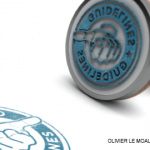One difference between the ACR guidelines and the EULAR guidelines is that when the first conventional synthetic disease-modifying antirheumatic drug (DMARD) fails, the ACR guidelines call for adding or switching to an anti-TNF, mainly advocating anti-TNF monotherapy. The EULAR guidelines call for combining biologics with conventional DMARDs.
But Dr. Saag said the ACR guidance might change since new evidence has emerged.
“Based on the evidence as it was reviewed by the group at this time, there was a preference” for initially using an anti-TNF, Dr. Saag said. “It is conceivable, based on newer studies, that recommendations very well may shift.”
Also, the ACR guidelines have not included guidance on the use of glucocorticoids, as the EULAR guidelines do, but they will be covered in the 2015 guidelines, Dr. Saag said.
“We heard loud and clear from many in this room and throughout the world about the need to bring glucocorticoids in, and that will happen,” Dr. Saag said.
Other new additions in the 2015 guidelines will be tofacitinib; new or updated safety considerations on prior cancer, prior infection, vaccination and tuberculosis; treat-to-target strategies; and approaches to tapering off therapy.
Also, he said, “We’re working hard to figure out how to incorporate, in a very rigorous way, the economic considerations. That’s really been one of our challenges.”
We in Europe cannot understand that something [we’ve had for] 120 years is only being debated in the United States.
Not a Cookbook
Dr. Saag also addressed a few common complaints about the guidelines.
One of those, he said, is the view that the guidelines don’t reflect the complexity that’s actually seen in patient care. But he said doing so is “simply not possible and the literature doesn’t support all the things we do in practice.” Plus, he said, the guidelines incorporated 500 different clinical scenarios using a former ACR method, and adding any more might lead to fatigue among the panelists.
He added that they are only recommendations and are “not intended to be a cookbook.”
Another complaint is a concern that the guidelines will be misused by lawyers and insurance companies making reimbursement decisions.
Why Do It?
Dr. Saag said a lot of entities come up with documents on the appropriateness of care, making it important that a document by rheumatologists themselves also be created.
“If we don’t do this well ourselves,” he said, “other people are going to do this for us, and not as [rigorously], focused exclusively on cost rather than cost effectiveness.”
![We in Europe cannot understand that something [we’ve had for] 120 years is only being debated in the United States.](https://www.the-rheumatologist.org/wp-content/uploads/springboard/image/RM_2014_09_pp57_04.jpg)

